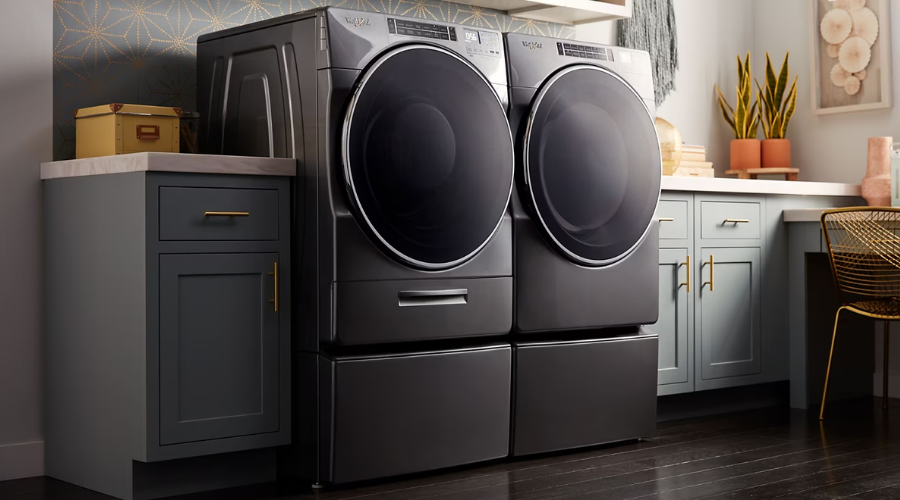
In the realm of household appliances, few have had as profound an impact on our daily lives as the refrigerator. This essential kitchen appliance has undergone significant transformations since its inception, revolutionizing the way we store and preserve our food. From the basic icebox to smart refrigerators with advanced features, the journey of refrigeration technology is a fascinating one.
The Birth of Refrigeration: Iceboxes and Beyond
The concept of preserving food through refrigeration dates back to ancient times when people used ice and snow to keep perishables cool. However, it wasn’t until the 19th century that the first formal refrigeration systems emerged. The early models were simple iceboxes, insulated containers that held a block of ice to keep the contents chilled. These iceboxes became a common sight in households, and the delivery of ice became a burgeoning industry.
The Icebox Era: A Cool Revolution
In the late 1800s, companies began producing iceboxes for mass consumption. These wooden or metal cabinets featured a compartment for ice and a storage area for food. The ice would slowly melt, absorbing heat and maintaining a cool temperature inside. While revolutionary at the time, this method had its limitations, and advancements were needed to make refrigeration more efficient and accessible.
The Rise of Electric Refrigerators: A Game-Changing Innovation
The early 20th century witnessed a paradigm shift in refrigeration technology with the introduction of electric refrigerators. General Electric (GE) played a pivotal role in this evolution by introducing the first electric refrigerator for home use in 1911. Unlike iceboxes, these refrigerators used a motorized compressor to circulate a refrigerant, providing a more consistent and reliable cooling effect.
Electric Refrigerators: Cool and Convenient
The electric refrigerator quickly gained popularity due to its convenience. No longer dependent on ice deliveries, households could now enjoy a continuous supply of cold storage. These refrigerators featured separate compartments for different types of food, such as meat, dairy, and produce, optimizing the preservation process.
Improving Efficiency: The Move to Freon
In the 1920s, the introduction of Freon as a refrigerant marked another milestone. This colorless, odorless gas was more efficient than previous alternatives, contributing to a significant improvement in the overall performance of refrigerators. Freon became a standard refrigerant for decades until environmental concerns led to its replacement in later years.
From Frosty to Frost-Free: Advancements in Design and Functionality
As refrigeration technology continued to evolve, manufacturers focused on enhancing the user experience and improving the efficiency of refrigerators. The mid-20th century saw the introduction of frost-free models, eliminating the need for manual defrosting and making maintenance much more straightforward.
Frost-Free Technology: A Welcome Relief
Frost-free refrigerators featured a heating element that would periodically melt any frost buildup on the cooling coils. This innovation not only saved users the hassle of defrosting but also ensured a more consistent temperature inside the appliance, preventing fluctuations that could compromise food quality.
Design Matters: Style and Convenience
In addition to functional improvements, the design of refrigerators underwent significant changes. The iconic single-door models gave way to double-door configurations, separating the freezer from the fresh food compartment. This design not only improved accessibility but also allowed users to customize temperature settings for different sections of the refrigerator.
Energy Efficiency: A Modern Imperative
In recent years, energy efficiency has become a top priority in appliance design. Refrigerators are no exception, with manufacturers incorporating advanced insulation materials, LED lighting, and more efficient compressors to reduce energy consumption. These eco-friendly innovations not only benefit the environment but also contribute to cost savings for consumers.
Smart Refrigerators: The Future of Cold Storage
The 21st century ushered in the era of smart appliances, and refrigerators were quick to join the connected ecosystem. Smart refrigerators go beyond traditional cooling functions, offering a range of features designed to streamline tasks and enhance the user experience.
Connectivity at Your Fingertips: Smart Features
Smart refrigerators are equipped with touchscreens, allowing users to access apps, calendars, and even stream content. Integration with voice-activated assistants enables hands-free control, making it easy to add items to shopping lists or check the status of food inventory.
Food Management: Keeping Tabs on Freshness
One standout feature of smart refrigerators is their ability to assist with food management. Built-in cameras allow users to remotely view the contents of their fridge, helping them keep track of expiration dates and create shopping lists. Some models even offer suggestions for recipes based on available ingredients.
Energy Monitoring: A Green Revolution
Environmental sustainability remains a crucial concern, and smart refrigerators address this by providing real-time energy consumption data. Users can monitor and adjust settings to optimize energy efficiency, contributing to both environmental conservation and reduced utility bills.
Conclusion: Cool Innovations for a Hot Future
The refrigerator has come a long way from its humble beginnings as a simple icebox. Over the years, it has evolved into a sophisticated appliance that not only preserves our food but also enhances our daily lives. From the introduction of electric refrigeration to the smart features of the modern age, each innovation has contributed to the efficiency, convenience, and sustainability of refrigerators.
As we look to the future, it’s clear that the refrigerator will continue to be a focal point of innovation in the kitchen. Whether it’s incorporating artificial intelligence for more accurate food management or further improving energy efficiency, the journey of the refrigerator is far from over. As technology advances, we can expect even cooler developments that will redefine how we interact with this essential appliance. So, as we open our refrigerators to grab a cold drink or prepare a meal, let’s appreciate the journey of innovation that has kept our food fresh and our lives convenient.








